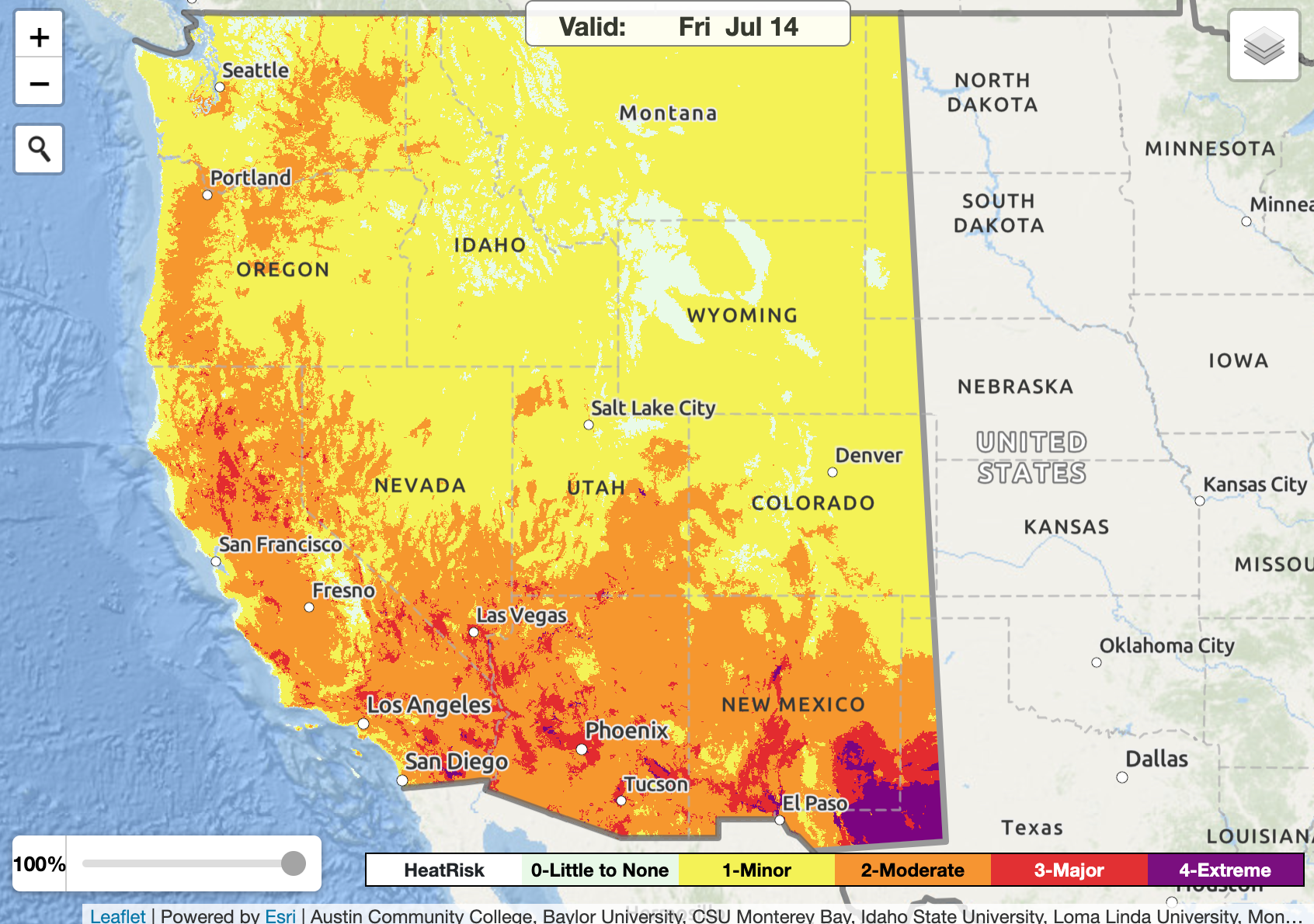Death Valley could hit highest temperature ever and Arizona pavement causing burns in merciless US heatwave
Emergency responders treating people for burns caused by sidewalks which have surpassed 160 degrees Fahrenheit (71C) in Arizona
Your support helps us to tell the story
From reproductive rights to climate change to Big Tech, The Independent is on the ground when the story is developing. Whether it's investigating the financials of Elon Musk's pro-Trump PAC or producing our latest documentary, 'The A Word', which shines a light on the American women fighting for reproductive rights, we know how important it is to parse out the facts from the messaging.
At such a critical moment in US history, we need reporters on the ground. Your donation allows us to keep sending journalists to speak to both sides of the story.
The Independent is trusted by Americans across the entire political spectrum. And unlike many other quality news outlets, we choose not to lock Americans out of our reporting and analysis with paywalls. We believe quality journalism should be available to everyone, paid for by those who can afford it.
Your support makes all the difference.A third of the US population was under heat alerts on Friday as the merciless conditions continued to topple hundreds of temperature records from coast to coast.
In the west, Death Valley National Park could set a new world record for the hottest temperature ever reliably recorded, while in Arizona, emergency responders were treating people for second-degree contact burns caused by sidewalks which have surpassed 160 degrees Fahrenheit (71C).
The intensifying heatwave across the southern US was mirrored around the world as millions of people in Europe, Asia and Africa contended with extreme, record-breaking temperatures driven by the climate crisis.
In the fast-growing Arizona city of Phoenix, temperatures have hit 110F (43C) for two weeks and are expected to remain there until Tuesday.
The city’s downtown was largely deserted under the baking sun, and some residents have taken to exercising before dawn when temperatures drop to lows of 90F (32C). The city has opened a “heat relief network” to allow those without air conditioning to cool off at places like public libraries.
Across Arizona, Arkansas, California, Nevada, Oklahoma and Texas, residents were warned to limit their time outdoors, turn on air conditioning, hydrate and not leave kids or pets locked in cars.
Public health officials advised residents to be alert to signs of heat exhaustion and heat stroke as risks of heat-related illnesses and death rise when temperatures surpass 90F.
An excessive heat warning was issued for Death Valley National Park until Tuesday by the National Weather Service (NWS). “It does feel like the sun has gone through your skin and is getting into your bones,” Park Ranger Nichole Andler told The Associated Press.
Furnace Creek, inside the park, is expected to hit 130-132F (54.4C - 55.6) on Sunday. The temperatures would “either tie or break [the] record for the hottest temperature reliably measured on Earth,” Daniel Swain, a climate scientist at the University of California, Los Angeles told KTLA.
NWS warned of life-threatening daytime heat above 120F and overnight temperatures unlikely to fall below 100F in Death Valley. Any prolonged exposure to the heat is highly discouraged due to extreme risk of heat-related illness, forecasters added.
The National Park Service reported earlier this month that extreme heat appeared to have caused the death of a 65-year-old California man whose body was found in a vehicle with two flat tires in Death Valley.

In June, a man and his teenage stepson died while hiking at Big Bend National Park, near the Rio Grande, in west Texas in temperatures of 119F (48C).
Officials advised people to stay off the trails in the afternoon at Big Bend while at Grand Canyon National Park in Arizona, rangers told people to stay off inner canyon trails for most of the day, where temperatures can be 20 degrees hotter than the rim.
In Las Vegas, near record temperatures were expected this weekend with Sin City potentially seeing three consecutive days of 115F highs and lows of 90F. “This has only happened once before in 2005”, the NWS noted.
Parts of California were also being warned to prepare for searing temperatures from Friday – the hottest of the year so far, NWS reported.
The most at-risk regions are California’s Central Valley, the Mojave and Sonoran desert regions, and southern California, Nevada, and Arizona including the cities of Las Vegas, Phoenix, Bakersfield and Fresno. Midday highs were mostly expected to be above 100F (37.7 C), and desert areas could reach 120F (48.8 C), forecasters said.

“Please plan accordingly, this is not the time to be hiking or be outside for long durations,” NWS’ Los Angeles office tweeted. “If you need to work outside, shift hours to the early morning, take frequent breaks and hydrate!”
California state officials reminded employers of health and safety regulations that mean outdoor workers are given water, shade and regular breaks to cool off. There are few protections for outdoor workers in other parts of the south including Texas.
Rising global temperatures are the most direct consequence of the climate crisis, caused by burning fossil fuels.
Heatwaves aren’t new: but global average temperature rise of 1.2C is making high temperatures more severe, erratic and prolonged and will continue to do so for years to come as countries continue to spew emissions.
One major shift is that in many places, nights are no longer cooling off, giving people less time to recover from the day. The African continent experienced its hottest night ever recorded last Thursday, when the nighttime low in Adrar, Algeria, remained at 39.6C (103.3F).
The same goes for the US, where 90F-plus water temperatures in the Gulf of Mexico and Atlantic were contributing to prolonged humidity which doesn’t break when night falls.
Searing temperatures are making for a dangerously hot summer in large parts of the Northern hemisphere in tandem with bursts of catastrophic flash flooding. Torrential rains and floods have caused dozens of deaths and affected millions in the US, Japan, China and India.
Conditions this summer are being amplified by the still-emerging El Nino climatic pattern, with more severe impacts expected throughout this year and into 2024. Last week was the planet’s hottest on record - an alarming milestone which climate scientists warned would likely be toppled soon.
“The extreme weather – an increasingly frequent occurrence in our warming climate – is having a major impact on human health, ecosystems, economies, agriculture, energy and water supplies,” said UN World Meteorological Organization Secretary-General Petteri Taalas on Friday.
“We have to step up efforts to help society adapt to what is unfortunately becoming the new normal.”





Join our commenting forum
Join thought-provoking conversations, follow other Independent readers and see their replies
Comments